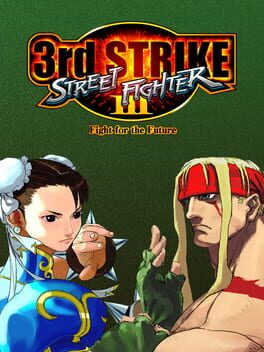Trivia Browser

▲
1
▼
At the 2017 Emerald City Comic Con during a panel with American voice actor John DiMaggio, he explained that he was told to make Wakka's voice sound like an islander, with an island accent. At the time, he broke up with his girlfriend from Hawaii, so he came up with some Hawaiian impersonations which landed him the role of Wakka.
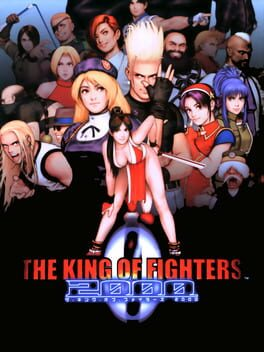
▲
1
▼
Hinako's design was initially based on the protagonist of the manga Jarinko Chie, who used sumo moves. The supervising designer, however, succumbed to insistent requests to use "a debutante" and Hinako gradually transformed into a wellborn young maiden. She was also originally going to fight barefoot, which was also dropped. The only thing that remained from her original concept was the athletic tape on her fingers.
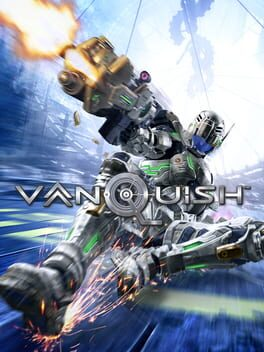
▲
1
▼
In a 2020 interview conducted by the YouTube channel Archipel with the game's creator Shinji Mikami, he talked about the development of Vanquish, which started after he left Capcom and joined PlatinumGames. While he claimed to not remember how he arrived at working on or coming up with the concept for Vanquish, he pitched 5 different project ideas beforehand to Sega and Platinum:
From the start, Mikami wanted to make an open-world game set in a universe similar to the film "Blade Runner", but due to budget, time and staffing constraints, he considered the project to be impossible to make. Regardless, Mikami drafted a design document that he formally pitched to Platinum as a coping mechanism in order to clear his head of the long-gestating idea and work on other projects, stating "I just couldn't switch my mind for a project that fit budget and resources before I gave form to this one. So I just presented it".
Afterwards he moved on to a completely different project; a cel-shaded game set in a universe akin to the works of Studio Ghibli entitled "The Witch and the Piglet". The game was about an evil witch who turned a prince into a piglet and cursed the accompanying village. The villagers would be friendly by day, but at night, they would turn into animals such as horses, pigs, and goats, and do "terrible things" every night, in turn revealing the villagers' evil sides. The main protagonist, a girl with "magical powers who could hover in the sky with an umbrella", had to defeat the witch and break the curse. Mikami believed the game was a mid-scale project that could be easily managed within a given budget and really wanted to make it happen, so he pitched it to Sega. However, Sega strongly declined the pitch, saying that they weren't looking for a game like The Witch and the Piglet.
Angered, Mikami moved on to another project designed exclusively for the Nintendo DS. The game was about a girl with psychic powers and an unknown serial killer who were confined in a hospital. The killer would murder people in the building one by one, and the girl had to figure out if the killer was a doctor, a nurse, or a patient. She used her powers to fight with the killer remotely, move things from a distance, take limited control of peoples' minds, and used a smartphone to send texts and chat during battles, all the while the killer would threaten to kill more people the closer she was to him. One of the central gameplay mechanics involved selecting floating Kanji on the Touchscreen to form two-word phrases such as "Drop Vase" or "Open Door", and watch the results on the hospital's surveillance cameras. Upon pitching it, Sega also rejected the game for the same reason as The Witch and the Piglet, stating the projects were too small and not what they were looking for.
Mikami then recounted an incident during the same meeting, where Sega's executives told him that they were looking for a "Taisaku", or a major project. In response, and angrier than before, he came up with a pitch on the spot called "Keiko and Taisaku", about two delinquent gang leaders, a boy and a girl dressed in high school uniforms, that fought each other, proclaiming "Here, you get Keiko and Taisaku, there's Taisaku in it so it works right?" Sega's executives silently ignored the pitch. Mikami recalled that after this incident came the back-and-forth talks that lead to him working on Vanquish.
Sometime in-between these events, Mikami also had an idea for a rhythm action game that he promptly scrapped after pitching it to Platinum, believing that the idea was not as fun as he had thought it was after presenting it.
From the start, Mikami wanted to make an open-world game set in a universe similar to the film "Blade Runner", but due to budget, time and staffing constraints, he considered the project to be impossible to make. Regardless, Mikami drafted a design document that he formally pitched to Platinum as a coping mechanism in order to clear his head of the long-gestating idea and work on other projects, stating "I just couldn't switch my mind for a project that fit budget and resources before I gave form to this one. So I just presented it".
Afterwards he moved on to a completely different project; a cel-shaded game set in a universe akin to the works of Studio Ghibli entitled "The Witch and the Piglet". The game was about an evil witch who turned a prince into a piglet and cursed the accompanying village. The villagers would be friendly by day, but at night, they would turn into animals such as horses, pigs, and goats, and do "terrible things" every night, in turn revealing the villagers' evil sides. The main protagonist, a girl with "magical powers who could hover in the sky with an umbrella", had to defeat the witch and break the curse. Mikami believed the game was a mid-scale project that could be easily managed within a given budget and really wanted to make it happen, so he pitched it to Sega. However, Sega strongly declined the pitch, saying that they weren't looking for a game like The Witch and the Piglet.
Angered, Mikami moved on to another project designed exclusively for the Nintendo DS. The game was about a girl with psychic powers and an unknown serial killer who were confined in a hospital. The killer would murder people in the building one by one, and the girl had to figure out if the killer was a doctor, a nurse, or a patient. She used her powers to fight with the killer remotely, move things from a distance, take limited control of peoples' minds, and used a smartphone to send texts and chat during battles, all the while the killer would threaten to kill more people the closer she was to him. One of the central gameplay mechanics involved selecting floating Kanji on the Touchscreen to form two-word phrases such as "Drop Vase" or "Open Door", and watch the results on the hospital's surveillance cameras. Upon pitching it, Sega also rejected the game for the same reason as The Witch and the Piglet, stating the projects were too small and not what they were looking for.
Mikami then recounted an incident during the same meeting, where Sega's executives told him that they were looking for a "Taisaku", or a major project. In response, and angrier than before, he came up with a pitch on the spot called "Keiko and Taisaku", about two delinquent gang leaders, a boy and a girl dressed in high school uniforms, that fought each other, proclaiming "Here, you get Keiko and Taisaku, there's Taisaku in it so it works right?" Sega's executives silently ignored the pitch. Mikami recalled that after this incident came the back-and-forth talks that lead to him working on Vanquish.
Sometime in-between these events, Mikami also had an idea for a rhythm action game that he promptly scrapped after pitching it to Platinum, believing that the idea was not as fun as he had thought it was after presenting it.

▲
1
▼
In a 2020 interview conducted by the YouTube channel Archipel with series creator Shinji Mikami, he stated that the idea for when the first Hunter makes his appearance to kill the player came from the film The Texas Chainsaw Massacre:
"Around the beginning you have this scene where the character enters that spooky house. There's that open door, then Leatherface appears and hits the character with an axe and kills him. He then drags him like cattle. I liked that sudden fear. It may be hard to grasp, but in the first Resident Evil there's the Hunter, a new creature that suddenly pops in and attacks you. I think that influence lives there a little."

▲
1
▼
In the Shivering Isles expansion, Sheogorath is the only character in the game to have a grown-out beard, and the player cannot grow one of their own. If you attack Sheogorath, he will teleport you far above an unmarked location on the map called "Punishment Point", where you will fall to your death among other corpses. If you make it to Punishment Point on your own, a corpse named "Sheogorath's Punished" can be found with the following Death Decree attached to him explaining the "heinous crime" that sealed his fate there:
"Sheogorath, Prince of Madness, Lord of the Never-There, Sovereign of the Shivering Isles, does, on this day, hence-forth make this decree:
Robert Wisnewski is the name of a member of Bethesda's art team that worked on the Shivering Isles expansion, presumably suggesting this Easter egg was a light jab at him for trying to grow a beard during development.
"Sheogorath, Prince of Madness, Lord of the Never-There, Sovereign of the Shivering Isles, does, on this day, hence-forth make this decree:
Robert Wisnewski
Citizen of the Shivering Isles, Resident of Bliss, and Honored Madman
has broken the laws and covenants of the Shivering Isles and offended the austere personage of Our Lord, through the following actions:
Attempting the Growth of a Beard, an Action Deemed Unseemly in the Eyes of Our Lord
It is further decreed that the actions of this citizen merit the strictest of punishments to be meted out at the earliest possible hour, in a manner to be chosen according to the Whims and Fancies of Our Lord Sheogorath"
Citizen of the Shivering Isles, Resident of Bliss, and Honored Madman
has broken the laws and covenants of the Shivering Isles and offended the austere personage of Our Lord, through the following actions:
Attempting the Growth of a Beard, an Action Deemed Unseemly in the Eyes of Our Lord
It is further decreed that the actions of this citizen merit the strictest of punishments to be meted out at the earliest possible hour, in a manner to be chosen according to the Whims and Fancies of Our Lord Sheogorath"
Robert Wisnewski is the name of a member of Bethesda's art team that worked on the Shivering Isles expansion, presumably suggesting this Easter egg was a light jab at him for trying to grow a beard during development.
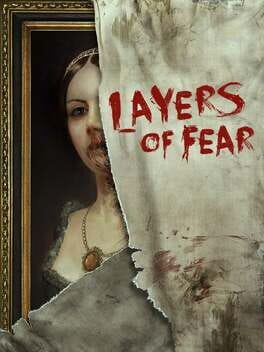
▲
1
▼
The game was inspired by “P.T.,” the playable teaser for ”Silent Hills,” a cancelled ninth installment for the Silent Hill franchise.
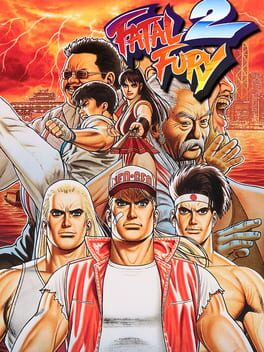
▲
1
▼
During the early development of Fatal Fury 2, SNK had two different ideas for Japanese characters: a male ninja named Ninja Master and a female idol. Ninja Master had been around 60% completed before being scrapped. However, many of his design elements were used for the design of the idol character, who would eventually become Mai Shiranui. The design for her "tail" was taken from his long scarf.
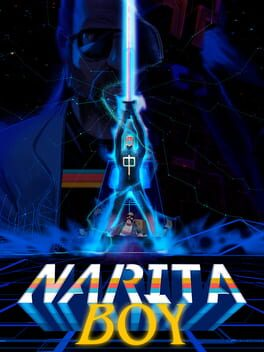
▲
1
▼
Director Eduardo Fornieles stated that the game was inspired by his visits to Spain and Japan throughout his lifetime.

▲
1
▼
Chin's character is heavily inspired by Yuen Siu-tien's portrayal of the Qing Dynasty drunken boxer Beggar So (Sam Seed) from the Drunken Master film series.
There are many similarities between Psycho Soldier Team's design and characters from the Drunken Master film series. Kensou's character is possibly influenced by Jackie Chan's portrayal of Wong Fei-hung from the first Drunken Master film. Kensou's love of Steamed Buns is may also be a reference to a scene from the film where Chan's character attempts to steal food from a restaurant. Likewise, Athena's final design in the game is likely inspired by the lead female character from Story of the Drunken Master. Both characters were students of the Begger So in the films.
There are many similarities between Psycho Soldier Team's design and characters from the Drunken Master film series. Kensou's character is possibly influenced by Jackie Chan's portrayal of Wong Fei-hung from the first Drunken Master film. Kensou's love of Steamed Buns is may also be a reference to a scene from the film where Chan's character attempts to steal food from a restaurant. Likewise, Athena's final design in the game is likely inspired by the lead female character from Story of the Drunken Master. Both characters were students of the Begger So in the films.
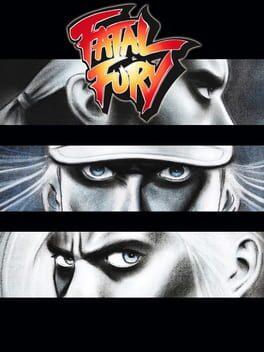
▲
1
▼
When Hiroshi Matsumoto and Takashi Nishiyama were working on the first Street Fighter game, they created a concept for a "caucasian man wearing a leather jacket" who would later be known as Joe in the final game. This character was originally planned to be the protagonist, going so far as to feature him in the opening sequence. But the idea was dropped, and the team ultimately decided on making Ryu the main character. After their move to SNK, still wanting to use their original concept, they based the design of the lead character on that design. This character ultimately ended up becoming Terry Bogard.

▲
1
▼
Developer Richard Rouse III said that he developed the game with open narratives in mind. Rouse was surprised to find that many video games tend to focus on “fixed narratives”. Therefore, he wanted to leave the player open to interpretations of their own since the game technically doesn’t have a story.

▲
1
▼
Cammy's character, fighting style, and animations are believed by some fans to be heavily inspired by Gally, the protagonist of the 1990 manga Battle Angel Alita.
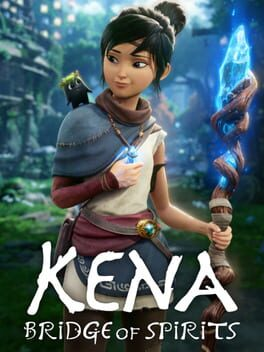
▲
1
▼
When composer Jason Gallaty wanted a wholly traditional Balinese score, he reached out to Balinese music group Gamelan Çudamani for their assistance since their traditional music fit his ideas. However, the group was initially thinking of turning down the offer because as traditionalists, they viewed video games and their music as things they were "working against". The Gamelan group eventually put their prejudices aside and warmed up to the idea however, because the game and its themes as described by Gallaty really struck a chord with them.
"...The themes [of the game] are so beautiful and so resonant with our culture and our values and philosophy. And you know, it’s exciting to see that."

▲
1
▼
Lucky's design is based directly on the villain character Hakim from Bruce Lee film Game of Death. He was originally planned to be "a black man obsessed with Japanese culture, but as his design got updated and [they] added his American clothes and appearance, it no longer made sense for him to be a Japanophile", and the idea was dropped.
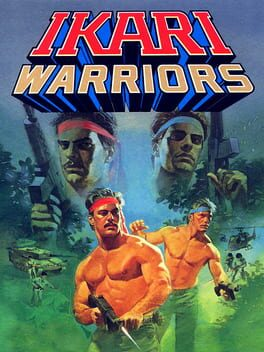
▲
1
▼
The game was originally planned to be an official licensed adaptation of the second film in the Rambo series, titled "Rambo: Ikari no Dasshutsu" ("Rambo: The Furious Escape"). However, SNK was unable to acquire the rights to the film, resulting in the game's title being shortened to Ikari, referencing part of the film's Japanese title.
After the game was released in North America, SNK got in touch with the film's star Sylvester Stallone, who was personal friends with the president of the SNK sales office in America, about acquiring the rights to the film. However, by that point it was too late as the game had already become well known by its Japanese title "Ikari" among North American players after being debuted at an American arcade expo, leading to the deal falling through and the game being officially released as Ikari Warriors in North America.
After the game was released in North America, SNK got in touch with the film's star Sylvester Stallone, who was personal friends with the president of the SNK sales office in America, about acquiring the rights to the film. However, by that point it was too late as the game had already become well known by its Japanese title "Ikari" among North American players after being debuted at an American arcade expo, leading to the deal falling through and the game being officially released as Ikari Warriors in North America.
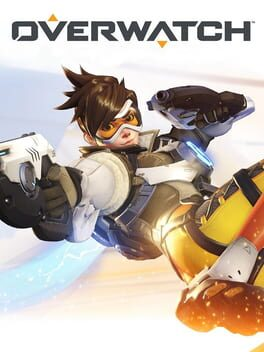
▲
1
▼
During BlizzCon 2016, Mei's voice actress Yu Zhang revealed that the character's popular line "Sorry! Sorry, I'm Sorry. Sorry." was a botched take that was put into the game anyways. The following year, the game's senior designer at the time Michael Chu took credit for including the line in the game after catching the mistake on tape in the recording booth, citing it as his favorite voice line in the game.
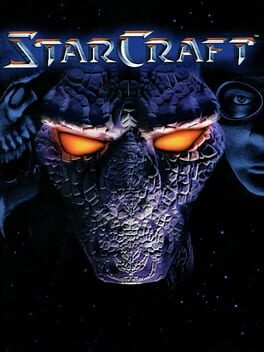
subdirectory_arrow_right Dominion: Storm Over Gift 3 (Game)
▲
1
▼
The original version of StarCraft developed prior to 1996 was considered to be inferior to other games shown at the time, most notably the real-time strategy (RTS) game Dominion: Storm Over Gift 3 being developed by Ion Storm Dallas, which was also shown at E3 and the Consumer Electronics Show that year. The game appeared to be miles ahead of what StarCraft was, with consumers responding to the latter game weakly as "Warcraft in space". Realizing that the version of StarCraft they had was worse than they had thought, following the release of Diablo at the end of that year, Blizzard began to "lick [their] wounds and plan for the future" by restarting development on StarCraft and completely overhauling their development process as a whole. StarCraft eventually released in March of 1998 to critical and commercial success, and was retrospectively dubbed as one of the defining games of the RTS genre.
However, after Ion Storm Dallas closed in 2001, a few of their former employees were scooped up by Blizzard and two of them later revealed to former Blizzard executive Patrick Wyatt that the demos Ion Storm presented of Dominion: Storm Over Gift 3 were actually pre-rendered trailers, and the players "presenting" the game's demos were actors pretending to play the game. This meant that the only reason why StarCraft was released in the form it was was because Blizzard got tricked into raising their standards to compete with a pre-rendered video, resulting in the creation of one of their most successful games.
However, after Ion Storm Dallas closed in 2001, a few of their former employees were scooped up by Blizzard and two of them later revealed to former Blizzard executive Patrick Wyatt that the demos Ion Storm presented of Dominion: Storm Over Gift 3 were actually pre-rendered trailers, and the players "presenting" the game's demos were actors pretending to play the game. This meant that the only reason why StarCraft was released in the form it was was because Blizzard got tricked into raising their standards to compete with a pre-rendered video, resulting in the creation of one of their most successful games.
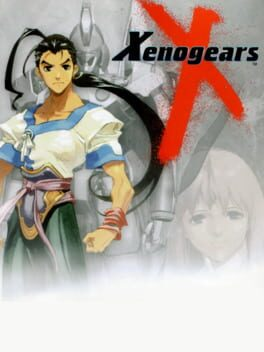
▲
1
▼
The second disc of the game has long been the subject of controversy due to its seemingly unfinished nature, where Fei and Elly sit in an empty area and narrate the remainder of the game's events as they are shown in a slideshow/montage format, with lengthy dialogue scrolls in front of them and little actual gameplay compared to the first disc. For almost two decades since the game's release, there was seemingly no official explanation about the production of the second disc, and fans believed that director Tetsuya Takahashi had more ambitious plans that the development team was forced to ditch because of budget and time constraints imposed by Square.
In a 2017 Kotaku interview with Takahashi, he revealed that while this speculation was correct, there was more to it than that:
The higher-ups at Square, when seeing that the team would not be able to reach the deadline in the state they were in, suggested that Takahashi end the game after the first disc when Spoiler:Fei and his team escape from Solaris. However, he did not feel the game's story should have ended there even with the lack of gameplay:
In a 2017 Kotaku interview with Takahashi, he revealed that while this speculation was correct, there was more to it than that:
"Honestly speaking, what had happened is Xenogears as a project was staffed pretty much entirely out of new staff members, young staff members... Back then, we had the direction of, ‘All projects take two years and that’s when we need to get it done.’ So on top of developing the game, we had to nurture and teach and grow these younger employees. Things like 3D were extremely new, which led to some delays in the schedule. It just wasn’t possible to get everything done."
The higher-ups at Square, when seeing that the team would not be able to reach the deadline in the state they were in, suggested that Takahashi end the game after the first disc when Spoiler:Fei and his team escape from Solaris. However, he did not feel the game's story should have ended there even with the lack of gameplay:
"It was a rough way to end it, and I felt like if we do that, then the players will not be satisfied... so we had a proposal—I proposed that if we do disc 2 in this way that it turned out to be, we can finish the game with the current number of staff and the current time allotted for the schedule and the remaining budget we have."
"I do think my decision was the right one to make, because if we had just ended at Disc 1 it would have been bad."
"I do think my decision was the right one to make, because if we had just ended at Disc 1 it would have been bad."

